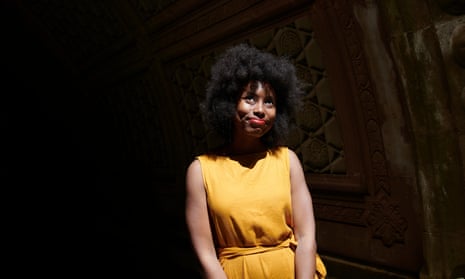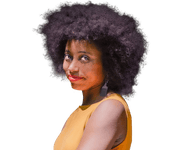It was a hot, humid day when I decided it was time for the Big Chop. My body wanted to go home, but my heart guided me to the Dominican barbershop in my neighbourhood in New York instead. The man sitting in a blue folding chair out front eyed me curiously as I approached.
I’d walked by the man countless times before, but we’d never spoken. Not until now, as I asked if he would cut off my hair. He frowned, unsure of what I was asking. But when I pointed at my relaxed, or chemically straightened, hair and made sweeping snip-snips with my fingers, he gestured for me to follow him. Little did he know that his agreement would change my entire life.
The natural hair blog Curl Centric defines the Big Chop as “the act of taking your natural hair journey from transitioning to officially 100% natural in a matter of minutes”. But something about the phrase feels like a misnomer to me. Even though the Big Chop can be performed in one fell swoop, the thought process that goes into doing it is no quick matter – especially when one considers the fraught, complicated history between Black people, Black natural hair and the rest of the world.
Which leads me to my next qualm with the phrase: while the Big Chop places significance on the act of hair being removed, it fails to acknowledge what’s being gained. Nor does it acknowledge its catalyst.
As a Black kid growing up with all-white friends in a majority-white American suburb in the late 90s and early 2000s, I longed for straight hair with a burning and slightly obsessive passion. When it was “makeover time” at sleepovers, I’d sit patiently and wait for the other girls to finish doing each other’s hair so we could finally do something I could participate in. The list of people who were allowed to touch my hair was short: my mom, my grandma Kate, and my mom’s hairdresser, all Black women.
So naturally, when my mom promised me my first relaxer when I turned 10, I was elated. I counted down the days until the hairdresser put the cocktail of chemicals in my thick curls that would “relax” them, doodling pictures of my hair in various states of carefree straightness in the meantime.
At the time, I didn’t see this as trying to “fit in” with white standards of beauty, as I do now. I was just excited to finally have one more thing in common with my friends. But it wasn’t just my peers who influenced my belief that bone-straight hair equalled beauty. Both my mom and my older sister were relaxing their hair at the time, and so many Black celebrities had straight hair too. Throw in the fact that the natural hair movement hadn’t taken off the way it eventually would thanks to the internet, and there I was, floating around in a natural hair desert.
I wouldn’t think to change until more than a decade later, when I moved to Brooklyn for graduate school. Everywhere I went, it seemed, I ran into a protest or a deeply disturbing headline about another police officer who’d killed a Black person without any repercussions. The unrest in the city was palpable, and I was starting to feel it in my own bones.
It began to affect what I wrote, what I cared about. And it affected how I saw myself. My personal unrest peaked, though, when I watched the documentary The Black Panthers: Vanguard of the Revolution. While I opposed the Black Panther party’s sexist attitude towards women, I was captivated by their aesthetic. I could understand how a generation of frustrated young Black men and women would cling to the Panthers’ sharp berets, their crisp black leather jackets, their billowing afros. They fashioned an entirely new sense of themselves, and it was powerful to watch.
Even more powerful was Kathleen Cleaver, the one-time party spokesperson and former wife of Eldridge Cleaver, explaining her afro to a white reporter. “This brother here, myself, all of us were born with our hair like this,” she tells him. “The reason for it, you might say, is like a new awareness among people that their own appearance, their physical appearance, is beautiful. And it’s pleasing to them.”
It was like Cleaver was speaking directly to me, and I felt pride taking in her matter-of-factness. But I felt shame, too, for relaxing my hair for so many wrong reasons. Watching that documentary, I realised those reasons no longer applied to me. No longer did I feel the urge to hide my Blackness, to snuff it under painful, expensive chemicals in order to blend in. For once, I considered what it might be like to reach into my scalp, touch my roots and feel proud of its many textures.
A few weeks after that, I found myself sitting in the Dominican barbershop, armed with much trepidation and a few reassuring words from a dear natural-haired friend from college: it’s only hair, it’ll grow back. I clung to those words as the barber snipped off my relaxed hair, waiting to see what lie beneath. The answer? Hair that was short, sweet and oh-so-pleasing to me.
Zakiya Dalila Harris is an American writer based in New York and the author of the novel The Other Black Girl
Do you have an opinion on the issues raised in this article? If you would like to submit a letter of up to 300 words to be considered for publication, email it to us at guardian.letters@theguardian.com

